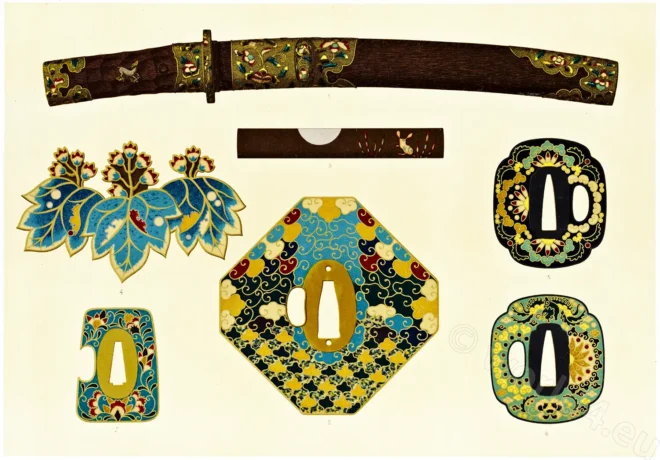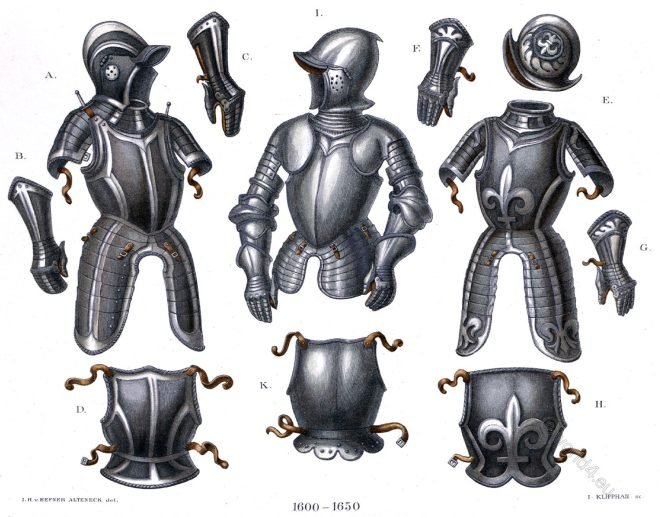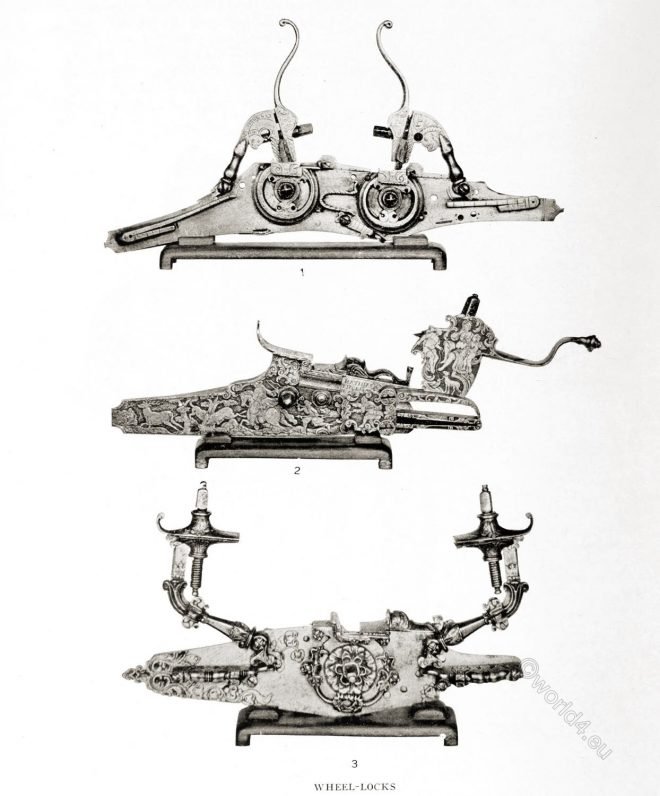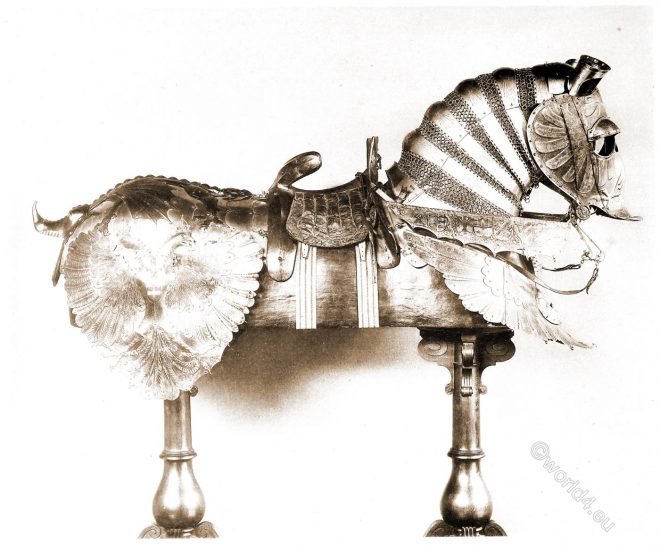Examples of Japanese Enamel of the sixteenth and seventeenth centuries are extremely rare, and are accordingly highly prized by collectors of Japanese art.
Tag: Weapons
The Japanese Sword and Its Decoration
The sword of Japan may be called a key to the study of the history, folklore, and customs of the country.
Complete harnesses of soldiers in the Thirty Years’ War 1618 to 1648.
Three complete sets of half-armour from the first half of the 17th century. They show the most essential characteristics of the armour worn
Specimens of wheel-locks, gun-locks of 16th, 17th, and 18th century.
European Hand Firearms of the Sixteenth Seventeenth and Eighteenth Centuries, by Herbert J. Jackson.
Armaments of war from 1350 to about 1460. France. Middle ages.
War armour from 1350 to about 1460, in the period of the Hundred Years War. The development of the Bascinet helmet of the knight’s armour in the Middle Ages
Indian Grand Mogul Babur leading a campaign. Military Costumes of India.
Babur setting out with his army. Indian Grand Mogul, leading a campaign. War costumes of the 16th century.
Hunting Knife and sheath by Eusebio Zuloaga. Spanish metalworker.
Eusebio Zuloaga, gunmaker to the Spanish monarchs, keeper of the Royal Armory in Madrid, and the most famous Spanish metalworker of the mid-nineteenth century.
Indian arts and crafts. Weapons, Jewelry and Equipment. Mughal Empire.
Indian arts and crafts. Mughal Empire. Elephant Ankus. Indian dagger called Khuttar. Mongolian helmet from the 16th century.
Heavy horse armor of Emperor Maximilian I. from c. 1508.
This complete “Rossgelieger” is of excellent quality. The breastplate, called “Fürbug”. The saddle is a so-called “crib saddle”.
Armament. War costumes from the 9th to 13th century in France.
Armament of the Middle Ages in France. Ring armour. Chain mail. War costumes from the 9th to 13th century.










